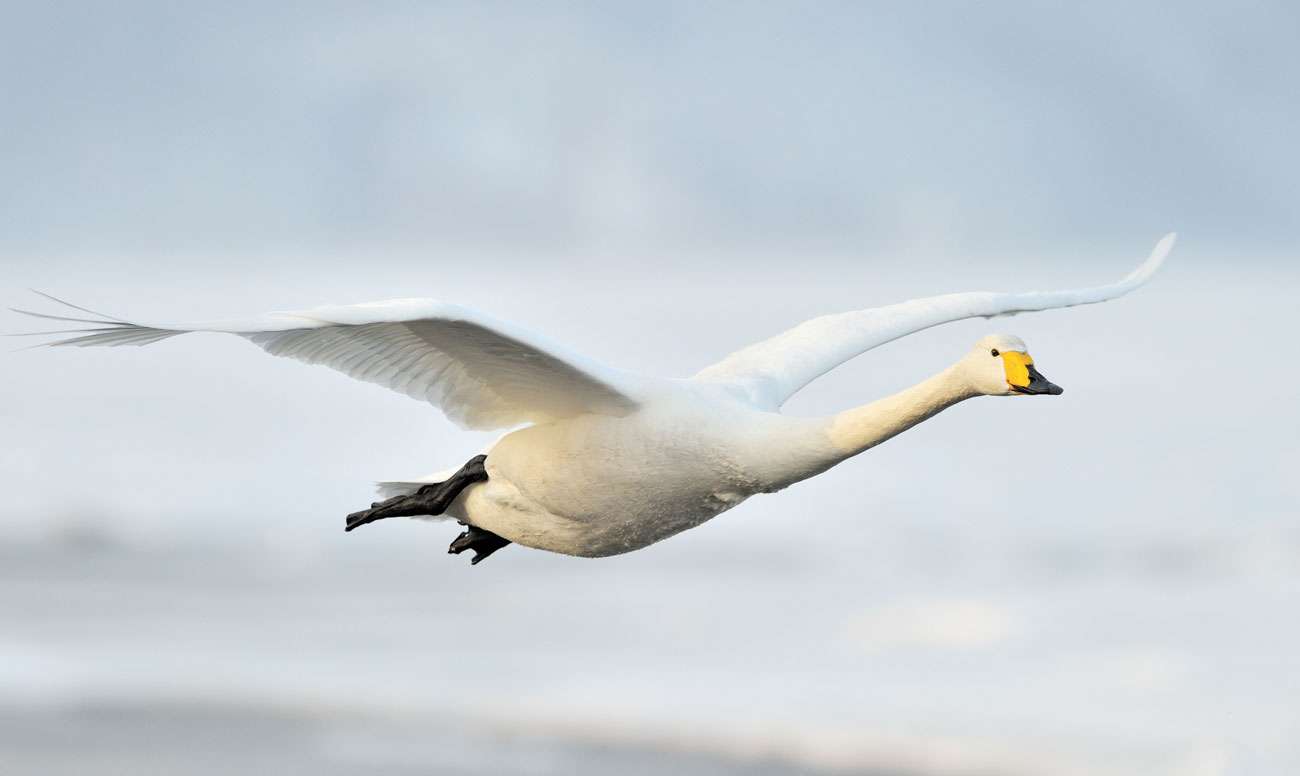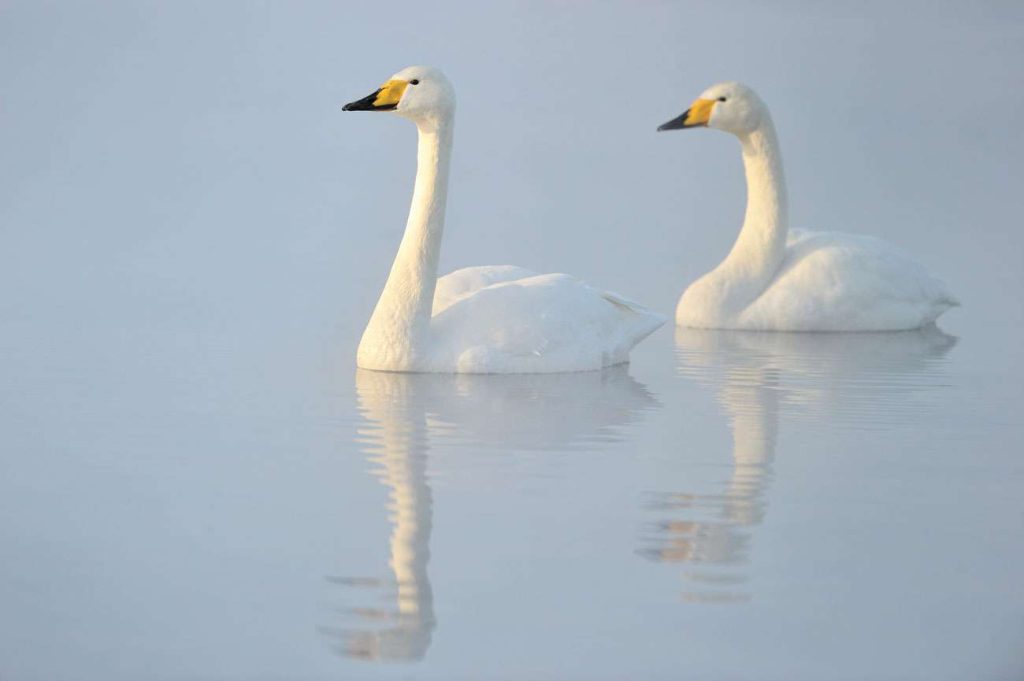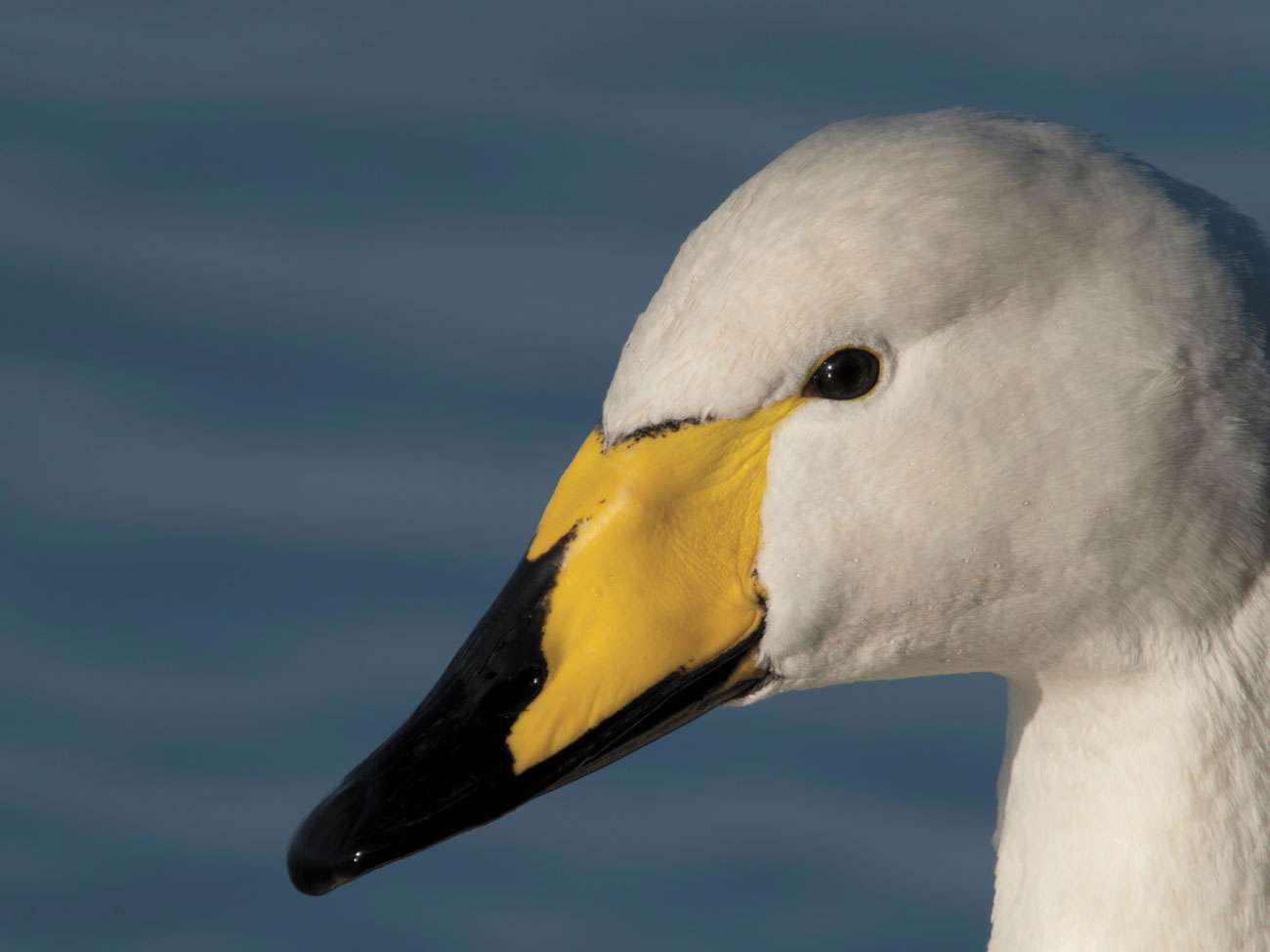
An early murky morning walk provided a nice surprise when through the grey I saw a large white bird on distant grassland.
At first I thought it could be a Little Egret but once I looked through my bins I saw it was clearly a Swan.
Now Mute Swans are quite scarce around the Cranleigh area so I was more than happy to have recorded one – and then I saw there was a second bird. Both were immatures that would have hatched the previous year.
They were feeding with a party of Canada Geese on lush grass near a pond below the slopes of the privately owned Alderbrook Park.
I had never seen this species here before so I went happily on my way, hoping they might hang around and perhaps one day breed.
Over a week later they were still in the vicinity and more than a month passed before I saw them again. This day was much clearer and, as I now had my telescope, I decided to give them a closer look from the public footpath and see if there were more than a pair.

A pair of Whooper Swans (Cygnus cygnus)
As before, they were a good 350 metres away and were usually frustratingly obscured by a dense line of trees on the far edge of the field next to me.
Most of the time they were not on view but every few minutes I would see a bit of tell-tale white – part of a wing, a bit of a back or a bowed neck as the birds grazed. Quickly they would shuffle behind a tree or the breeze would blow some low branches in front of them to make them magically disappear.
And then – hey presto! One stuck its head up momentarily and I got quite a shock. Surely that was a yellow bill, not a red one as displayed by a Mute? Or were my eyes deceiving me? I zoomed up the magnification but then the bird stuck its head down and it was a few minutes more before I was able to confirm it did indeed have a yellow bill. With a black tip. Which made it rather special.
It was surely a Whooper Swan – and so was its mate. In which case it was the first known record for Cranleigh and its surrounding area. So rare this far south of its Iceland or Scandinavian breeding quarters that Surrey is lucky if it has one record a year.
What were they doing here? I reasoned the largely undisturbed quiet meadows in front of me, with a pond and island laid on, might just have persuaded a lost-in-the-fog pair of immatures to make a protracted landing.

The distinctive yellow and black bill of a Whooper Swan
Perhaps the honking of country loving local Canada and Greylag Geese had helped entice them down while they were trying to migrate their way back home. I was shaking my head in disbelief.
But before I put the news out I did one more check to be sure they were not smaller versions of the yellow-billed Swan brigade. I didn’t want my dreams of finding a Whooper, far from its north-west or eastern England wintering grounds to make me blind to reality.
A week earlier I had enjoyed the privilege of seeing a family of, sadly, increasingly rare Bewick’s Swans who had been spending the winter not too far away over the West Sussex border near the River Arun.
Although numbers of these much rarer Swans from the western Siberian tundra have dropped alarmingly in recent years I needed to ‘eliminate them from my inquiries’, as a detective would say, although they would have been a welcome sighting anywhere in Surrey too.
No, they were definitely the size of Mutes, had longer necks than Bewick’s, and displayed far more extensive yellow on the bill.
I put the news out and walked home to collect the car and go and inform the Park’s management of their two rare visitors. Perhaps they would know how long the Whoopers had been present. I wondered if it would be possible to get nearer the birds in my car and use it as a hide to photograph this unique visitation.
But the wind was swiftly taken out of my sails as I realised there was no point in asking if I could view them more closely.

A pair of Whooper Swans on the lake (Cygnus cygnus)
Yes, they knew the birds were there and they knew exactly what they were. They had bought them in. Mystery solved.
It turned out these were British-bred feral birds and I was surprised to discover they could be purchased from various breeders who currently advertise them for sale at up to £800 a pair. A very smart addition to any front lawn that’s big enough!
Sadly, one of the birds later decided not to roost on the island in its pond and was nabbed one night by a fox. But its chum now has two more friends to keep it company and delight anyone who sees them.
Birding can throw up days like the one I describe here. Getting the ID correct is not necessarily the full story.
But I’ll continue to look out among the other birds for Whoopers around here. Some might fly over one day. You never know.
With apologies to Abba I can sum up the experience like this:
‘Super Whooper dreams are gonna blind me
But I won’t feel blue
Like I always do
‘Cause somewhere in the crowd there’s you’ – that’s you Mr Whooper!
Twitter – @Crane_Spotter
Click here to see all of Robin Stride’s previous Crane Spotters.











